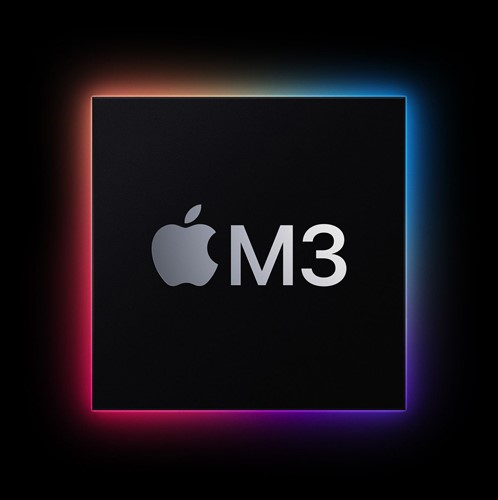
Apple is currently in the process of creating the upcoming generations of its M-series Apple silicon chips. The chips projected for release in late 2023 and 2024 will be recognized as the “M3” series. These M3 chips are set to leverage enhanced TSMC chip manufacturing technology, resulting in heightened speed and efficiency levels surpassing previous iterations.
This comprehensive guide encompasses all available information regarding Apple’s forthcoming M3 chips, and it will be continually updated as we gather additional insights about them.
Advanced Insight on Apple Chip
Similar to the M2 chip, the M3 chip is designed with an 8-core CPU and a 10-core GPU. However, significant performance enhancements are anticipated in the more advanced variants. According to insights from Bloomberg’s Mark Gurman, the top-tier M3 chip, known as the Ultra, is projected to incorporate a 32-core GPU, potentially extending to an impressive 80-core GPU configuration.
To provide a breakdown:
| M2 CHIP | M3 CHIP | |
|---|---|---|
| Standard | 8 CPU cores (4 high-performance and 4 energy-efficient) 10 GPU cores | 8 CPU cores (4 high-performance and 4 energy-efficient) 10 GPU cores |
| Pro | 10 or 12 CPU cores (6 or 8 high-performance and 4 energy-efficient) 16 or 19 GPU cores | 12 or 14 CPU cores (6 or 8 high-performance and 6 energy-efficient) 18 or 20 GPU cores |
| Max | 12 CPU cores (8 high-performance and 4 energy-efficient) 30 or 38 core GPU cores | 16 CPU cores (12 high-performance and 4 energy-efficient) 32 or 40 GPU cores |
| Ultra | 24 CPU cores (16 high-performance and 8 energy-efficient) 60 or 76 GPU cores | 32 CPU cores (24 high-performance and 8 energy-efficient) 64 or 80 GPU cores |
Advancement to 3-Nanometer Technology.
While current M-series chips are built upon TSMC’s 5-nanometer technology, the upcoming M3 chips are set to leverage TSMC’s latest innovation – the 3-nanometer chip technology. The transition to a smaller node size translates to heightened transistor density, enhancing both efficiency and performance. The adoption of 3nm chips holds the potential to yield a remarkable efficiency improvement of around 35 percent. Consequently, this could extend battery life for M-series Macs.
TSMC, Apple’s supplier, stands as one of the few companies capable of producing 3nm chips. Reports suggest that TSMC’s yield rates hover just above 55 percent currently due to the novelty of the technology. Apple’s progression to 3nm signifies the first node upgrade following the 5nm M1 chip’s introduction in 2020. This shift is anticipated to deliver a more substantial performance enhancement compared to the M2 iteration.
M3 Macs.
So far, Apple has used standard “M1” and “M2” chips in its lower-end MacBook Pro and MacBook Air machines, while higher-end MacBook Pro machines use “Pro” and “Max” chips. The Mac Studio and Mac Pro use Apple’s “Ultra” chips.
If Apple sticks with this chip naming scheme, lower-end M3 chips could be in Apple’s entry-level machines, while higher-end Macs could get M3 Pro, M3 Max, and M3 Ultra chips.
Macs Expected to Use M3 Chip.
- 13-inch MacBook Air
- 15-inch MacBook Air
- 13-inch MacBook Pro
- Mac mini
- 24-inch iMac
Macs Expected to Use M3 Pro Chip.
- Mac mini
- 14-inch MacBook Pro
- 16-inch MacBook Pro
Macs Expected to Use M3 Max Chip.
- 16-inch MacBook Pro
- Mac Studio
Macs Expected to Use M3 Ultra Chip.
- Mac Studio
- Mac Pro
When will Apple Release M3 Chips?
Research so far suggest that we’ll see the first Macs with M3 chip in 2023. Apple plans to release the standard M3 chip first, and we could potentially see it in refreshed 13-inch MacBook Pro, Mac mini, and MacBook Air models before the end of the year. Bloomberg‘s Mark Gurman says we can expect new Macs in October.
Higher-end machines with M3 Pro, M3 Max, and M3 Ultra chips are not expected until 2024.



